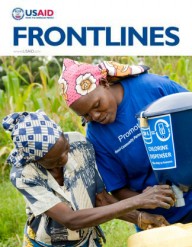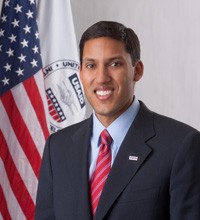For the first time in human history, we have the tools and knowledge to achieve goals that were simply unimaginable in the past: the eradication of extreme poverty and its most devastating consequences, including widespread hunger and preventable child and maternal death.
But we can’t do it alone. We have to mobilize the energy and ingenuity of a new generation of students, inventors and entrepreneurs to deliver results on a greater scale than ever before. Today, we’re applying this new model of development to our work around the world, and the partnerships are inspiring.
Students are designing cutting-edge tools to save lives, including a microscope that attaches to an iPhone camera to diagnose malaria on the spot. And entrepreneurs are bringing business solutions to development challenges, whether that means building solar-powered micro-grids in rural Indian villages or developing mobile apps to monitor extractive industries in the Congo.
Over a hundred years ago, a German mathematician named David Hilbert gave a speech in Paris where he presented a list of the 23 most important unsolved math problems of his time. It galvanized the world of science—setting mathematicians from Zurich to Princeton on the trail of elusive solutions.
“Who among us would not be happy to lift the veil behind which is hidden the future?” Hilbert asked.
Since then, mathematicians around the world have kept a list of unsolved problems to ponder from time to time. In 2008, DARPA—the Pentagon’s advanced research agency—announced 23 new problems that it hoped would catalyze major breakthroughs.
Many of us in development are not mathematicians. But we do have our own set of challenges to solve, and maybe—like mathematicians—we should have them scrawled on our whiteboards or tacked to our walls. And we should think about them every day.
How can we bring off-grid light to millions who lack electricity? How can we teach a child to read who may never set foot inside a classroom? How can we ensure that a mother can give birth safely without a doctor by her side?
By engaging new communities—from church groups to student advocacy organizations—in our mission, we will not only solve these challenges, but also lay the foundation for economic success in the global markets of the future.
Our young people will have the science, technology, engineering and math skills they need to compete. Our communities will be more globally minded and better connected to the world. And our children will be inspired by the moral contributions they will make to humanity.
Together, we will bridge the ingenuity of a wide-open and inclusive development community with a pathway out of poverty for millions of people around the world.










Comment
Make a general inquiry or suggest an improvement.